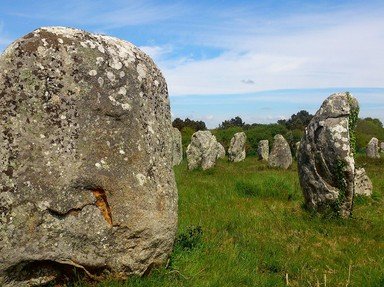Quiz Answer Key and Fun Facts
1. The Neolithic Revolution began at different times in separate locations around the world, but approximately when did it first occur?
2. The Neolithic Revolution began in what part of the world?
3. What development made the Neolithic Revolution such an important time in history?
4. At what stage of physical development were Neolithic people?
5. What type of tools and weapons were used during the Neolithic Revolution?
6. Although the type of animal first domesticated varied from place to place, which animal is considered to be the first domesticated in the world?
7. Which of the following words best describes the type of housing used by Neolithic people?
8. One of the consequences of the Neolithic Revolution was the growth of towns and cities. Which of the following listed is among the oldest farming communities in the world?
9. The domestication of plants and animals led to an increase in population.
10. The domestication of plants and animals led to the specialization of other skills and trades.
Source: Author
ponycargirl
This quiz was reviewed by FunTrivia editor
bloomsby before going online.
Any errors found in FunTrivia content are routinely corrected through our feedback system.

